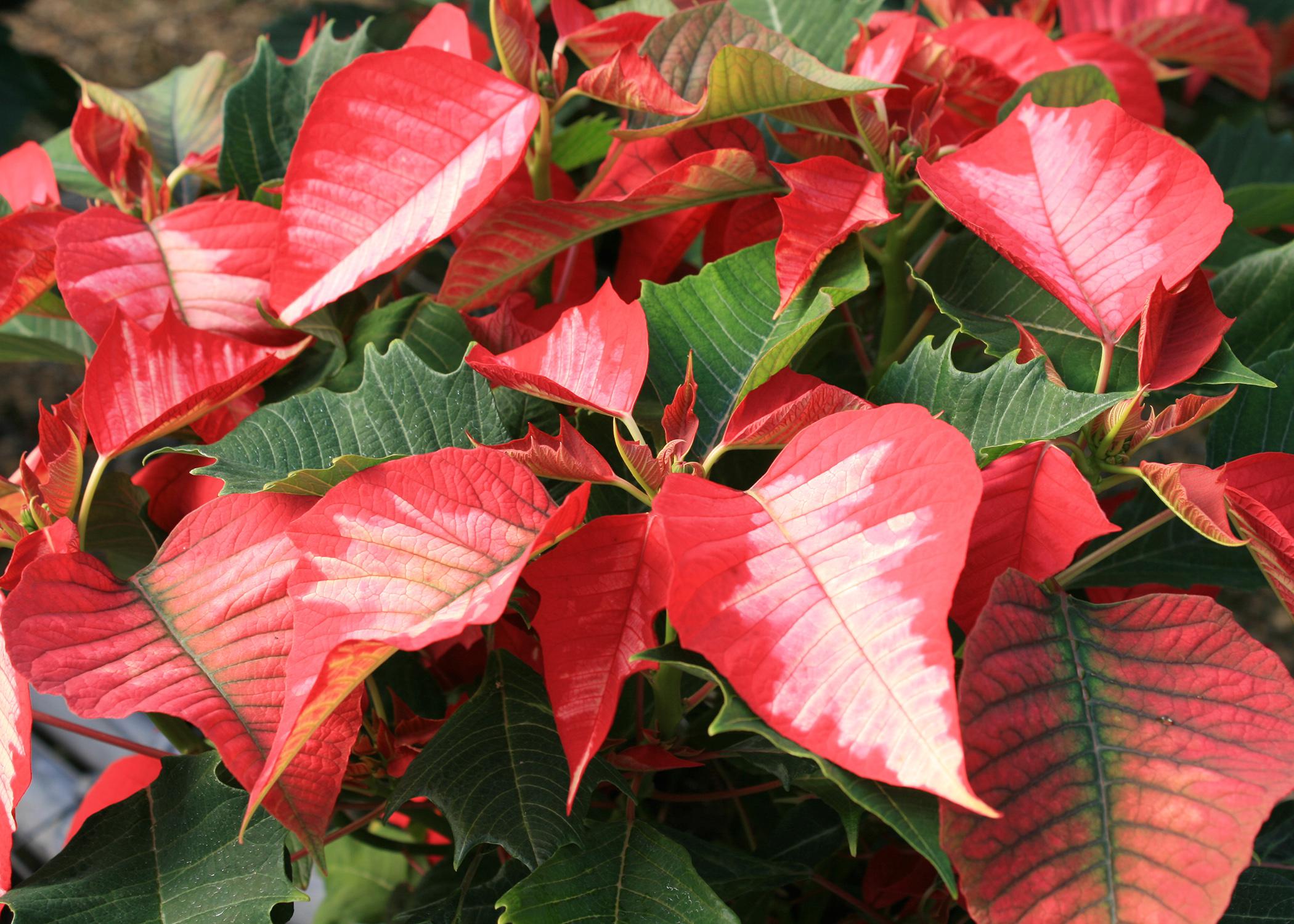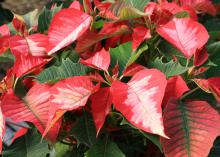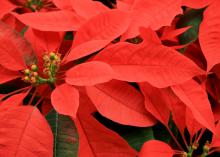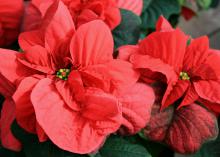Information Possibly Outdated
The information presented on this page was originally released on December 2, 2013. It may not be outdated, but please search our site for more current information. If you plan to quote or reference this information in a publication, please check with the Extension specialist or author before proceeding.
Color choices give poinsettias variety
In their native Mexico, the bright red flowers of poinsettia are known as Flores de la Noche Buena – or Flowers of the Holy Night – as they bloom each year during the Christmas season.
If you’re a fan of poinsettias but like variety, you’ll find the range of poinsettia colors available is truly remarkable. Poinsettia is no longer simply “that red Christmas plant.” Colors range from red and white to even maroon for Bulldog fans, making it hard to choose. In addition to solid colors, there are bicolor, speckled and marbled poinsettias. There are even rose-flowered selections.
And if that’s not enough, growers are changing the colors even more by painting and adding sparkles. When shopping for poinsettias, be ready for the wide variety of options and take your time to select the very best. Bracts should be completely colored and fully expanded. If not, the plants were probably shipped before they were completely ready.
You can hardly go wrong with these colorful “flowers” brightening your decorations. However, what we think of as flowers are actually modified leaves called bracts. The true flowers are the yellow/green bead-like structures called cyathia. Your poinsettia will last longer if you select plants with unopened or only partially opened cyathia.
In recent years, growers and florists have been using poinsettias in combination containers. Southern Gardening has promoted combining poinsettia with the Mississippi Medallion winner Diamond Frost euphorbia. Both are in the euphorbia family and have similar growing and care characteristics. Another combination to try is snow-white chrysanthemum with a traditional red poinsettia.
Follow a few care tips to help keep your poinsettia looking good long after the Christmas holidays. Poinsettias need at least six hours of indirect sunlight and comfortable room temperatures. When grown in the greenhouse, the temperatures are about 72 degrees during the day and 60 degrees at night. The closer you get to providing these same temperatures, the longer your poinsettia will last.
Don’t let the leaves or bracts touch window glass, as the low outside temperatures are readily transferred through the glass. Also, keep poinsettias away from frequently opened doors. It might look great by the front door when guests arrive, but if you want the plant to look great later, avoid the sudden temperature changes.
Temperatures below 50 degrees can harm the foliage and colorful bracts. On the way home with your new poinsettias, be sure to cover them carefully, taking care not to break any branches or stems. Poinsettias are fragile, and stems can break quite easily from mishandling. Not only can the paper or plastic shipping sleeves hide damage, but you should pay particular attention when removing these. Never try to slide one over the plant, but always tear or cut the sleeve off.
The absolute most important thing to remember is DO NOT overwater your poinsettia. Poinsettias are sensitive to wet feet, and root rot sets in quickly. Make sure the potting mix feels dry to the touch before you water it. Remove the decorative sleeve around the pot, and water the top of the container over the kitchen sink. Replace the decorative sleeve after the water has finished draining.
While poinsettias are not poisonous to our pets, according to ASPCA Animal Poison Control, a pet that eats poinsettia leaves will most likely experience only GI tract irritation. No ornamental and houseplants are meant to be eaten by our animals, so keep the poinsettia out of reach of pets. Some humans may be sensitive to the milky latex sap in the poinsettia, which may cause a skin rash or contact dermatitis. Always wash your hands thoroughly after handling a poinsettia.
Whichever colors and combinations you choose, be sure to brighten your Christmas celebrations with your favorite poinsettias.









